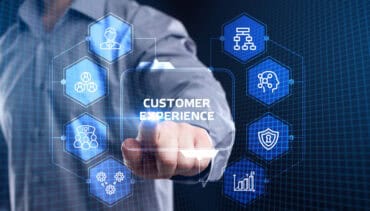
Before taking the leap into digital twin technology, it is important to develop a methodology for capturing data and ensuring that the data is always accurate in real time.
For years the industry has been plagued by a lack of adequate solutions to redefine the telecom industry. Customers needed something more. Digital twin technology enables an exact digital replica of an environment or specific asset. These solutions can create exact models to help inform and predict for better decision making.
Digital twins are enabling uncapped potential for businesses, and while many early adopters are now able to see the benefits, many are hesitant to take the plunge into full replication.Though many may think they fully understand digital twins, it’s unlikely they are aware of the capabilities these devices enable. Similar to private networks, wireless technologies are becoming analogous to software with roadmaps.
Having a building represented as a digital twin significantly simplifies the process of layering on new technologies and proving their ROI. This contrasts with the traditional method of individually surveying and designing for each technology, preventing a holistic view during planning. Instead, private networks evolve into software-defined environments with roadmaps. Supported by the right wireless technologies, they can deliver the appropriate use cases at the designated time. Imagine Wi-Fi in the conference room today and 5G in the parking lot in a few months.
What solution does my business need
Digital twin technology poses several benefits for industries across the board. Industries like manufacturing, where product development and optimization are critical, find immense value in product digital twins. Though digital twin solutions are beneficial to nearly every industry, specific configurations must be made to fully enable their potential and to tailor them to the needs of each industry. There is no one-size-fits-all solution.
The largest benefit associated with digital twins is their ability to be tailored to fit any business’s needs. For example, product digital twins are especially useful in manufacturing as they replicate physical items and can facilitate virtual test and design optimization. In that same area, process digital twins can simulate real-world workflows to improve efficiency during logistics and supply chain management, working in similar industries with those of product digital twins. Asset twins are also often used in machinery, and they monitor the performance of physical assets. This enables decision makers to fully assess the benefits and shortcomings of their machinery or even their infrastructure.
Separate from manufacturing, digital twins are also helpful in urban planning and facility management situations as they can simulate entire buildings, providing greater insight into development and expansion for urban or rural areas. In tandem, city digital twins replicate urban environments for improved city planning, and human digital twins simulate individual characteristics, contributing to personalized treatment plans and human-machine interaction.
See also: Generative AI Helps Build Digital Twins, Digital Twins Help Support AI
Where to begin with digital twins
As you can tell, the possibilities with digital twins are endless, though the configurations must be tailored though to adequately reap their benefits. With that in mind, many struggle to know where to begin. The initial idea of migrating all monitoring functionality to digital twins can feel daunting, however, there are specific guidelines to simplify the process.
Before taking the leap into digital twin technology, it is important to develop a methodology for capturing data and ensuring that the data is always accurate in real time. During this process, it is crucial to record the data in its most authentic form. Once this process is established, you will then need to ensure the availability of data with your partners and suppliers and that they provide the necessary documentation and data needed to build and maintain the digital twin. As this process progresses, the digital twin model will begin to build itself and start to replicate your item. In short, the best way to get started with digital twin technologies is by taking steps to digitize and capture data and then focusing on harnessing that data as much as possible.
Data is the backbone of a digital twin
Accurate data is one of the most important aspects of digital twin technology. It serves as the building blocks that your digital twin will replicate. Therefore, having data that is correct and realistic is crucial. Inaccurate data can lead to major cost implications as iterations on a false virtual replica may not align with real-world outcomes. When data accuracy is managed in the beginning, the outcomes are extremely successful.
Digital twins are a cutting-edge solution that support the design and optimization of networks as a digital asset, leading to better cost analysis, technology selection, and meeting ROI targets. The traditional methodology of surveying, engineering, and designing for every individual technology deployed in a building is not conducive anymore, making these devices significantly important to the telecom industry. They are built to support solutions that unlock unparalleled potential and provide engineers with faster design speeds without compromising quality. The benefits of these solutions will continue to grow over the next several years.






























